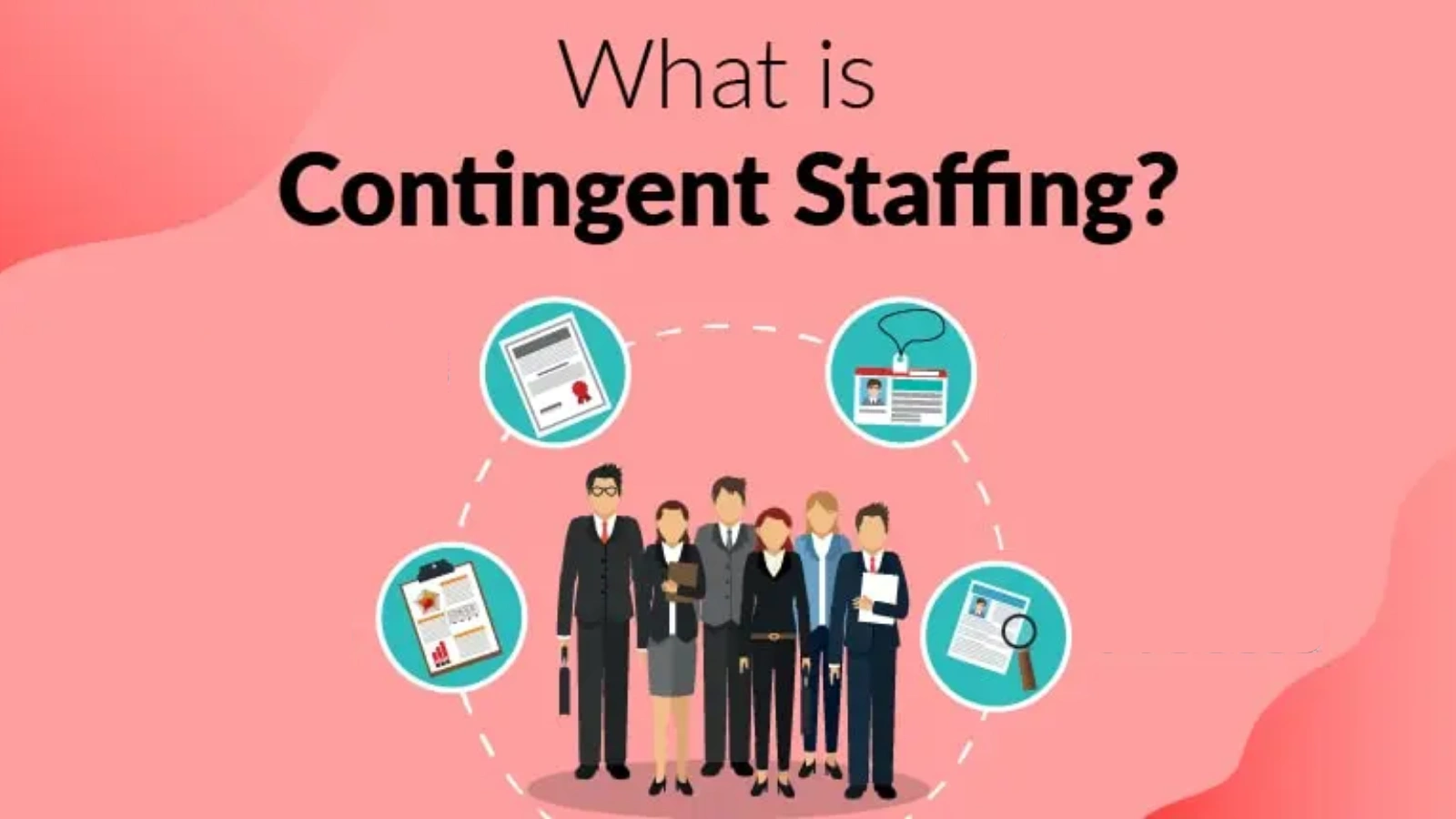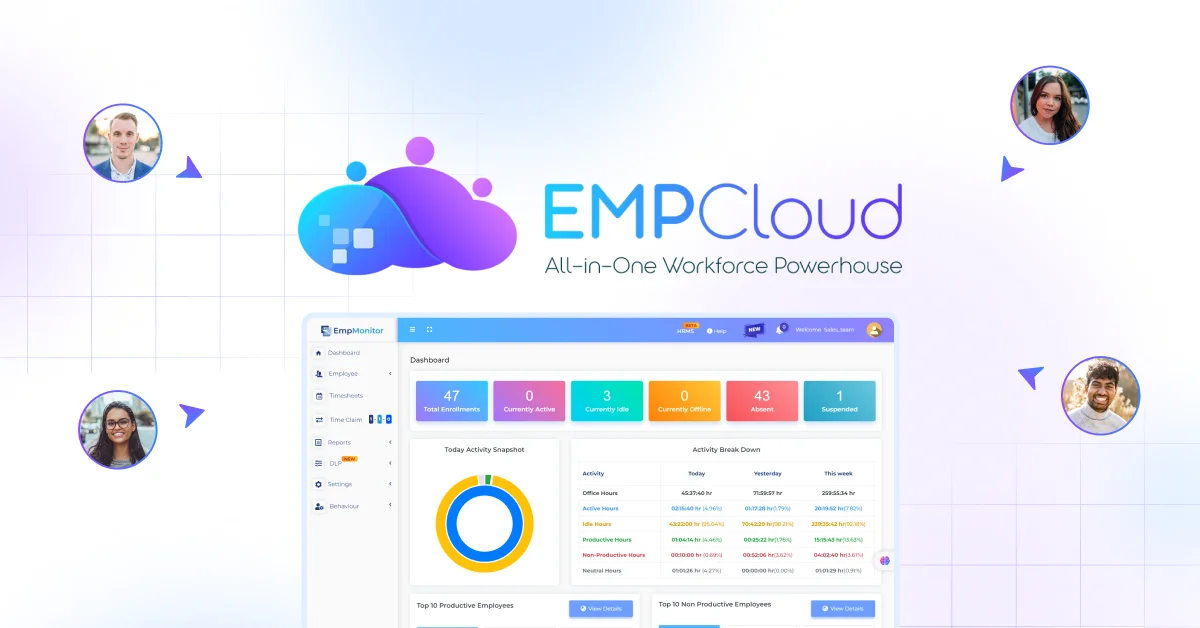
In the evolving world of work, the concept of a contingent worker has gained significant prominence. As businesses embrace flexibility, understanding this role and its impact on organizational dynamics becomes critical.
This blog explores the concept of non-permanent staff, their roles, benefits, and best practices for effectively managing this important workforce segment.
In a hurry? Listen to the blog instead!
What Is A Contingent Worker?
A contingent worker is a non-permanent individual hired by an organization to perform specific tasks or projects on an as-needed basis. Unlike traditional full-time employees, these individuals typically engage on flexible terms, ranging from freelancers and independent contractors to temporary staff. They offer businesses a scalable workforce, allowing operational agility without long-term commitments.
Such workers often bring specialized skills and expertise that may not be available within the permanent workforce. This exposure to diverse industries and projects not only benefits organizations but also contributes to the contingent worker’s professional growth, helping them expand their skillset and market value over time. This flexibility enables organizations to quickly adapt to changing business needs, manage workload peaks, and control costs effectively.
Additionally, non-permanent staff can provide valuable support on projects that require specific expertise or short-term resources, without the obligations of full-time employment.
Why Has The Contingent Workforce Become So Important?
The contingent workforce has expanded rapidly, driven by changing business needs and global economic shifts. Companies seek to optimize costs while accessing specialized skills quickly. Contingent workers fill skill gaps, support project surges, or help during peak workloads, providing agility that traditional staffing models often lack.
Moreover, the rise of remote work and digital technologies has made it easier to connect with and manage non-permanent or project-based staff around the globe. This flexibility enables organizations to remain competitive and responsive in an increasingly dynamic market environment.
Also Read:
How To Achieve Professional Growth And Advance Your Career?
What Types Of Contingent Staff Should Organizations Know About?
Within the category of contingent workers, several distinct types of contingent staff exist. Recognizing these types helps companies deploy the right resources effectively and ensures that each contingent resource employee is utilized optimally.
Freelancers:
These self-employed professionals handle assignments independently, often working remotely. They bring highly specialized skills on a project-by-project basis, allowing organizations to tap into expert talent without long-term commitments.
Temporary Employees:
Typically hired through staffing agencies, temporary employees fill short-term vacancies or help manage workload surges. They provide flexible support for roles that do not require permanent staffing.
Independent Contractors:
Engaged for specific projects with clearly defined scopes, independent contractors deliver results within agreed timelines. They operate as external vendors and often bring unique expertise tailored to project needs.
Consultants:
Usually experts in their fields, consultants provide strategic advice and solutions on a contractual basis. They often play critical roles in driving business transformation and addressing complex challenges.
Seasonal Workers:
Brought in during peak business periods such as holidays or busy seasons, seasonal workers help businesses manage demand spikes efficiently without committing to year-round employment.
On-Call Workers:
Available as needed, on-call workers provide immediate support for unpredictable or fluctuating workloads. Their availability ensures operational continuity in dynamic environments.
Each type of contingent staff requires a customized management approach to maximize effectiveness, ensure compliance, and align with business objectives. Understanding these categories helps organizations build agile and responsive workforce strategies.
How Can Businesses Benefit from Hiring a Contingent Worker?
Organizations that incorporate contingent workers enjoy several strategic and operational benefits.
First, contingent staff bring cost efficiency by eliminating expenses related to benefits and long-term employment. Their flexibility allows companies to scale workforce size according to demand fluctuations. Contingent resources also provide access to specialized skills that might be unavailable internally.
Additionally, hiring non-permanent staff often involves a faster recruitment process through pre-vetted agencies or freelance platforms. It also reduces company risk by avoiding the complexities of labor laws that apply to permanent employees. Many companies track outcomes through internal evaluations or tools like a productivity report, which helps measure the performance, efficiency, and value delivered by contingent workers compared to the permanent workforce.
Also Read:
How To Create The Right Productivity Report?
How Do You Manage Contingent Resources Effectively?
Managing contingent resources alongside permanent staff requires a strategic and structured approach. Here’s how organizations can do it effectively:
Establish Clear Contractual Agreements:
Define the scope of work, deliverables, timelines, and payment terms upfront. Ensure both parties understand responsibilities to prevent disputes or confusion.
Implement Strong Onboarding Processes:
Provide proper orientation to help contingent staff understand company policies and culture. Connect them with relevant teams and resources for better collaboration and productivity.
Integrate with Core Teams:
Encourage open communication and inclusion in team meetings. Promote collaboration between contingent and permanent employees to maintain workflow harmony.
Monitor Quality and Performance:
Use measurable performance metrics aligned with business objectives. Regularly review progress and deliverables to maintain work quality and accountability.
Ensure Compliance and Legal Oversight:
Adhere to labor laws, tax regulations, and confidentiality agreements. Keep proper documentation to reduce risks related to misclassification or liability.
Leverage Technology for Efficiency:
Adopt workforce management platforms to automate and streamline key tasks such as tracking work hours, managing payments, and monitoring compliance.
Use Advanced Solutions Like EmpCloud:
EmpCloud offers a unified platform for managing contingent workers from onboarding to performance tracking. It enhances compliance, security, and operational transparency, helping organizations manage their contingent workforce efficiently.
How EmpCloud Can Help You With Contingent Workforce Management?
EmpCloud redefines how companies manage their workforce by providing a comprehensive suite of features aimed at operational efficiency and employee experience. Trusted by over 1500 industry leaders, EmpCloud’s manager and HR-centric solutions address the unique challenges of managing not only permanent staff but contingent staff as well- in modern workplaces.
Some of the standout EmpCloud features include:
- Time Tracking and Automated Timesheets: Ensure precise monitoring of contingent workforce hours and simplify payroll processes.
- Geo-Location and Live Location Tracking: Real-time tracking of field-based contingent staff helps maintain operational efficiency and safety.
- Task and Project Management: Assign, monitor, and manage tasks and projects seamlessly, guaranteeing deadlines and quality.
- Client and Data Management: Centralize client info and interactions for consistent service, even with temporary staffing.
- Compliance and Data Security: EmpCloud’s advanced data loss prevention protects sensitive information accessed by the contingent workforce.
- Contactless Face Recognition Attendance: Streamline onboarding and site access with secure, touchless attendance technology.
- Comprehensive Reporting: Gain actionable insights into contingent workforce performance for informed decision-making.
- Employee Requests and Exit Management: Manage onboarding, offboarding, and ongoing requests effectively to maintain a smooth work lifecycle.
All these features come together in EmpCloud’s unified dashboard, providing a complete overview of employee attendance, productivity, and performance, whether permanent or contingent, allowing organizations to optimize resource allocation and workforce strategies.
By adopting EmpCloud, companies can reduce complexities in managing a contingent worker while creating an engaging, secure, and highly productive work environment.
What Are The Main Differences Between A Contingent Worker And A Permanent Employee?
Understanding the distinction between a contingent staff and a permanent employee is crucial for organizations to make informed workforce decisions and allocate resources effectively.
Each type of worker brings unique advantages that can support different business needs.
Employment Duration:
Contingent workers are hired for a fixed period or for specific projects, and their engagement ends once the work is completed.
Permanent employees, on the other hand, hold ongoing positions with no defined end date, creating long-term stability and continuity within the organization.
Nature of Work:
Contingent workers are usually brought in to complete specialized, short-term tasks that require specific skills or expertise.
Permanent employees perform a broader range of responsibilities, contributing to day-to-day operations and supporting long-term organizational objectives.
Benefits and Compensation:
Non-permanent staff typically do not receive benefits such as health insurance, retirement plans, or paid leave, which makes them more flexible for short-term needs. In contrast, permanent employees enjoy these benefits, which help foster loyalty, job satisfaction, and a sense of security.
Flexibility:
Contingent workers offer high flexibility, allowing organizations to quickly scale the workforce up or down depending on project demands or seasonal requirements.
Permanent employees provide operational stability but are less adaptable due to employment protections and contractual obligations.
Cost Implications:
Hiring contingent workers is often more cost-effective for short-term needs, as companies avoid long-term salary, benefits, and other fixed expenses.
Permanent employees, although a higher long-term investment, contribute to sustained performance, institutional knowledge, and team cohesion.
Integration with the Organization:
Permanent employees are fully integrated into the company culture, policies, and long-term strategic goals. Contingent staff, however, are usually only partially integrated and focus primarily on completing their assigned tasks efficiently.
Skill Utilization:
Contingent staff bring specialized skills and niche expertise that may not exist within the current team, making them ideal for targeted projects and effective workload prioritization during high-demand periods.
Permanent employees develop a broader skill set over time, contributing to the company’s continuous growth and operational stability.
What Are the Challenges of Working With Contingent Workers?
Managing non-permanent staff provides flexibility and access to specialized skills, but it also presents unique challenges that organizations must address to ensure smooth operations and project success.
- Cultural Integration:
Non-permanent staff often join teams for a short duration, making it harder for them to fully integrate into the company culture. Limited engagement can affect team cohesion and collaboration, particularly on long-term projects. - Data Security:
External or temporary staff may have access to sensitive business information. Without proper security protocols, this poses risks of data breaches or misuse of confidential information. - Compliance with Labor Laws:
Contingent workers are subject to different labor regulations than permanent employees. Organizations need to stay vigilant to maintain compliance and avoid legal or financial penalties. - Performance Measurement:
Tracking and evaluating performance can be challenging when non-permanent staff are assigned to specific projects or work remotely. Establishing consistent metrics and standards is essential to ensure fair and accurate assessment. - Communication Gaps:
Short-term engagement and remote locations may result in gaps in collaboration, feedback, and knowledge sharing. This can slow down decision-making and reduce overall productivity.
Effectively managing these challenges requires proactive planning, clear processes, and the right tools. When addressed properly, organizations can fully leverage the benefits of a contingent workforce while minimizing risks.
Also Read:
How To Master Workload Prioritization For Higher Productivity?
What Future Trends Will Shape The Contingent Workforce?
The contingent workforce will continue evolving influenced by several trends. Technology advancements, including AI and automation, will integrate with workforce platforms like EmpCloud to improve worker matching and management.
The rise of remote work will broaden contingent roles supporting distributed teams worldwide. Regulatory bodies will adapt labor laws to better govern contingent arrangements. Organizations will focus more on skills-based hiring, favoring contingent models that bring in specialized expertise. Finally, corporate diversity and inclusion initiatives will extend to contingent workforce strategies, promoting equal opportunities.
Anticipating and preparing for these trends will help companies leverage their contingent workers more effectively in the future.
How Can You Leverage A Contingent Worker For Strategic Business Advantage?
Companies that view non-permanent staff as strategic assets rather than temporary help can unlock their full potential. Properly managed, they can drive innovation, fill critical skill gaps, and support organizational growth.
By adopting tools like EmpCloud, organizations gain the ability to align contingent worker efforts with corporate goals, improve workforce agility, and maintain compliance. Building a culture that values all workers, permanent or contingent, fosters loyalty and productivity.
Strategic investment in technology, clear policies, and a supportive environment enables businesses to create a resilient and adaptable labor strategy.
Conclusion
The contingent worker is no longer a fringe concept but a cornerstone of modern workforce strategy. Understanding who they are, how they differ from permanent employees, and how to manage them effectively is critical for organizational success.
Tools like EmpCloud provide the means to streamline contingent workforce management, reduce risks, and enhance productivity. As the future of work shifts towards increasingly flexible models, companies that embrace and optimize their contingent workforce will gain significant competitive advantage.
FAQs
1. How can contingent workers contribute to innovation within an organization?
Contingent workers often bring specialized skills and fresh perspectives that may not exist within the permanent workforce. Their diverse experience allows them to offer creative solutions and innovative approaches to projects. By leveraging their expertise on specific initiatives, organizations can drive innovation, improve problem-solving, and implement new strategies without committing to long-term employment.
2. What are the legal implications of misclassifying a contingent worker as a permanent employee?
Misclassifying a contingent worker can lead to serious legal and financial consequences. Organizations may face fines, penalties, and obligations to provide back pay for benefits, taxes, and overtime. Ensuring proper classification according to labor laws is essential, not only to remain compliant but also to protect the organization’s reputation and avoid potential lawsuits or audits.
3. How can organizations ensure effective communication with remote contingent workers?
Maintaining clear communication with remote contingent workers requires deliberate planning and reliable tools. Regular check-ins, virtual meetings, and collaborative platforms help keep everyone aligned with project goals. Establishing clear expectations, reporting structures, and feedback channels ensures that remote workers remain engaged, productive, and integrated with the broader team.







